Content
To be honest, when Hendrik from Basic asked me if I would like to test this bike, I was initially sceptical. Until now, I was definitely not one of the advocates of such extreme interpretations of the gravel bike theme. It always reminded me too much of the past. To the first mountain bikes and to John Tomac, the mountain bike star from the 1990s, who even won mountain bike downhill competitions with his dropbar hardtail.
When I looked at the monster, I involuntarily asked myself: Have we now completed the loop and landed back at the point where it all began a few decades ago? Okay, this bike is certainly lighter, has working brakes, grippy tyres and gears that engage precisely and with definition. But in principle, this is nothing new and we were actually all glad to have left this “phase” behind us. Right?
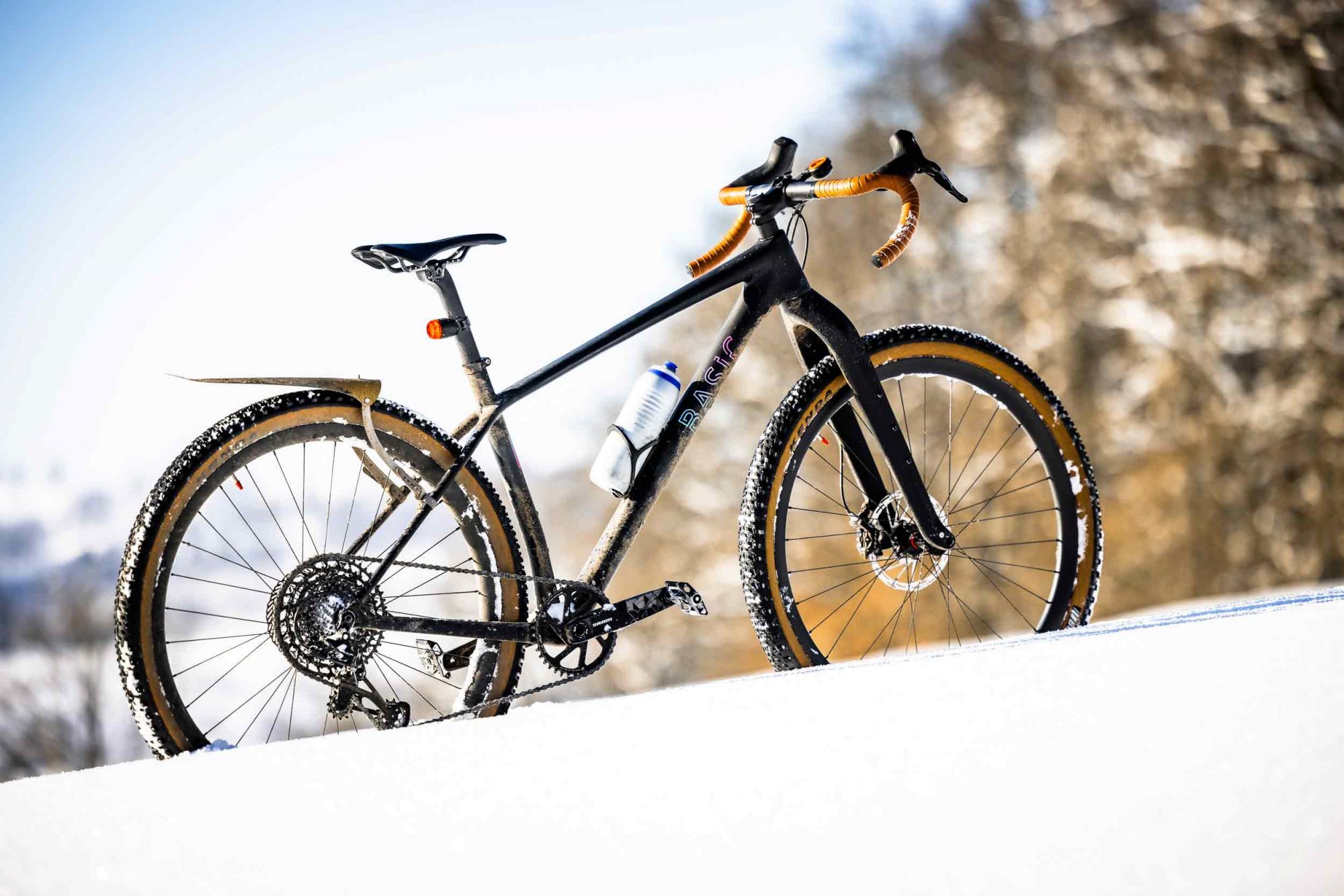
Nevertheless, I agreed. Firstly, because I am simply curious and want to give everything a chance. Secondly, because the Basic Monster Test Bike was the perfect pressure tool for me to complete the #festive500 Challenge. After all, a test like this “obliges” me to use the bike extensively – the 500 #festive kilometres came in handy. And so it was decided: in winter 2023/2024, I will be riding a Monster for around two months! The “handover” took place in person – as a Christmas present, so to speak – on Christmas Day: Hendrik was on his way to his family and dropped the bike off without further ado. So on 26 December we were ready to go! So there are almost 500 Festive kilometres and a few hundred more in this test. And here are my impressions.
You can read about how my rather wet #festive500 went in our issue #23!

Basic Monster gravel bike test – the facts
Let’s start with the frame. This is made of carbon fibre and, true to the company motto, is kept quite “basic”. This also includes the fact that it is a so-called “open mould” frame. This means that the frame has been developed by a manufacturer who makes the shape or design of the frame openly available to other companies or manufacturers to produce and sell under their own brand name. “Open mould” frames are often a more cost-effective alternative to so-called “closed mould” frames, which have exclusive designs and are usually more expensive, as manufacturers have to take into account the costs of development and the intellectual property of the design.
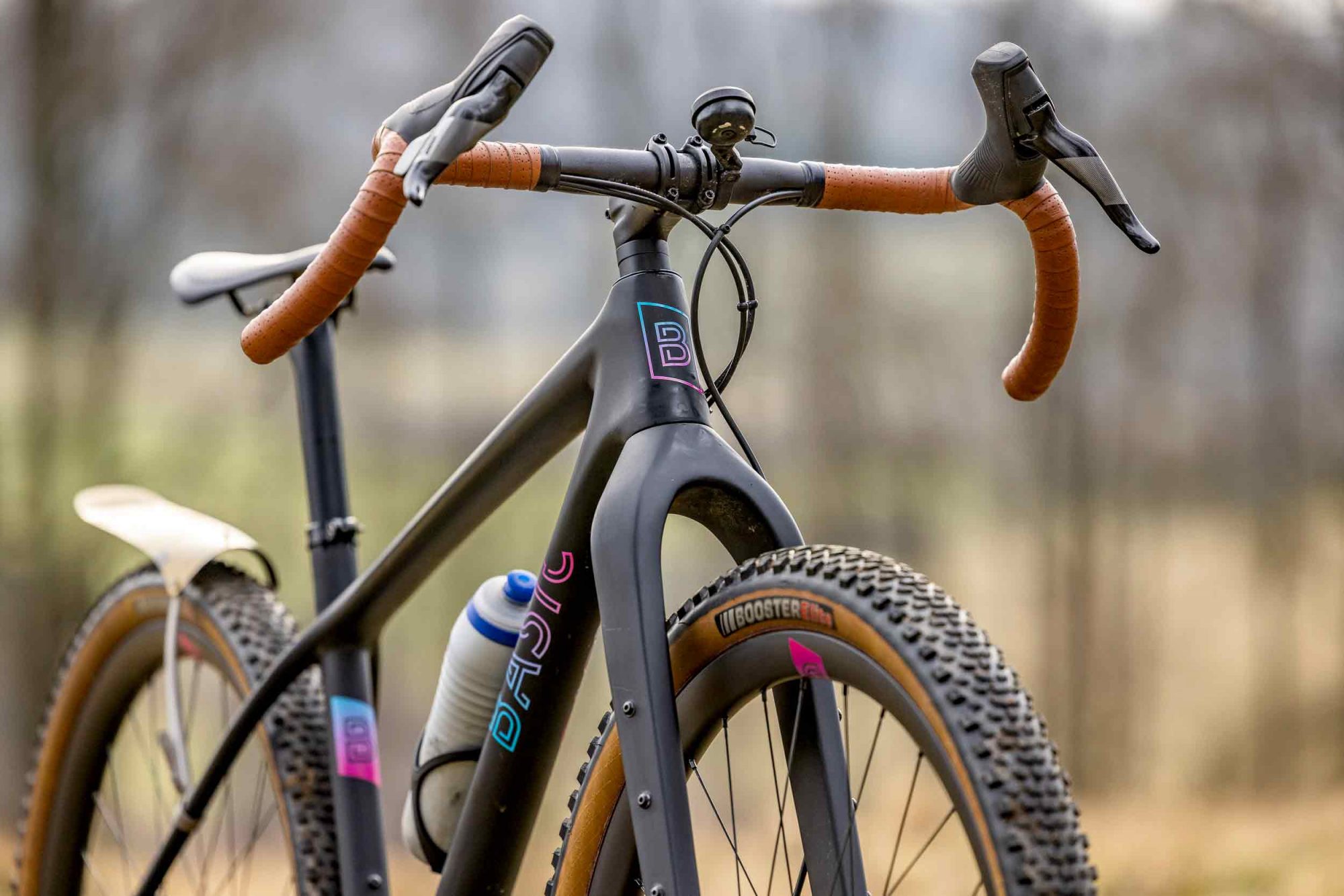

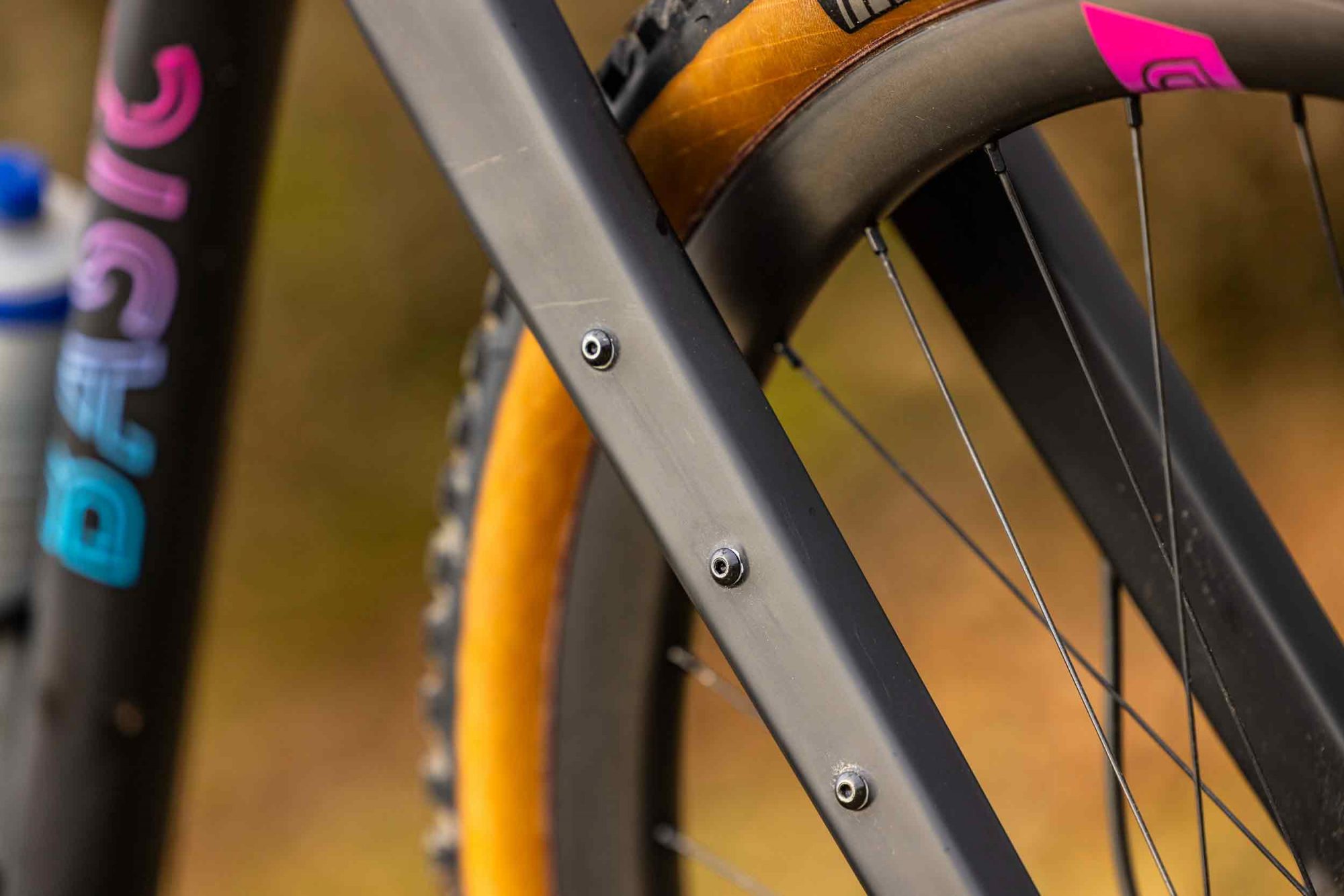
Basic has opted for the cheaper version. Why not, if the result meets your expectations and you can save money. After all, it is part of the company’s philosophy to keep the price down so that many people can enjoy great bikes. So, how much does the Basic Monster Test Bike cost?
The “Basic MTB Carbon” frame set includes the frame, the fork, a headset, thru axles and a seat clamp. This set costs 1,090 euros. Alternatively, you can buy the “bare” frame for 890 euros or the complete bike from 3,980 euros. That all sounds quite fair – but it raises the question for me whether and how Basic Bikes cares about sustainability? After all, low prices and conscious consumption are not always best friends…
Basic is very clear about this: “Nowadays, it’s simply part of the job to think about the environmental impact when setting up a company. This was an important issue for us right from the start.” Of course, if you sell carbon bikes cheaply, it’s not all great and the issue of sustainability is certainly a challenge. However, Basic has put a lot of thought into this and summarised it in its “Basic Bikes Open Manifesto for Environmental Protection and Sustainability”. For a “two-man show” like Basic Bikes, this is quite remarkable. You can download this manifesto from the Basic Bikes website and are even invited to share your ideas.
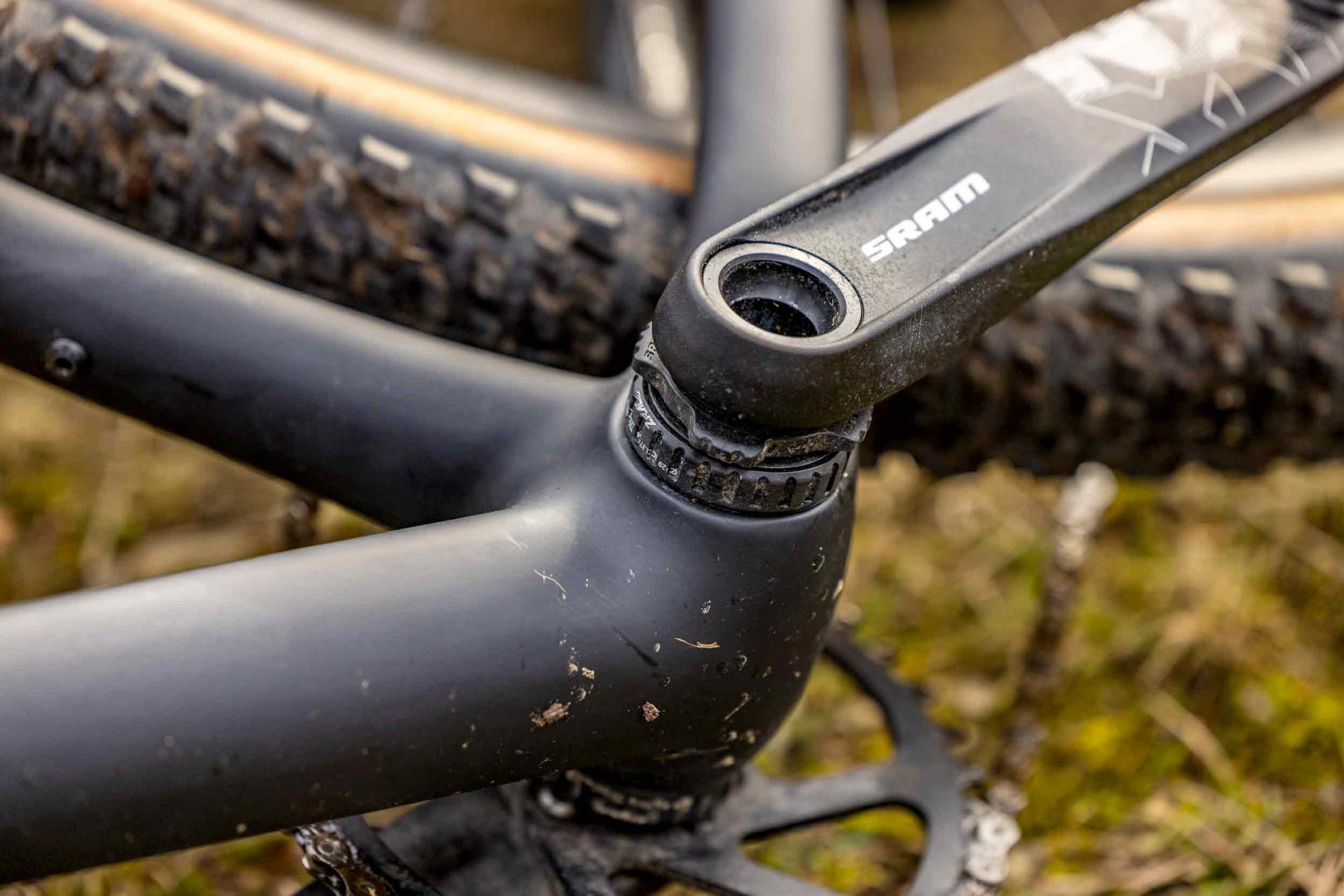
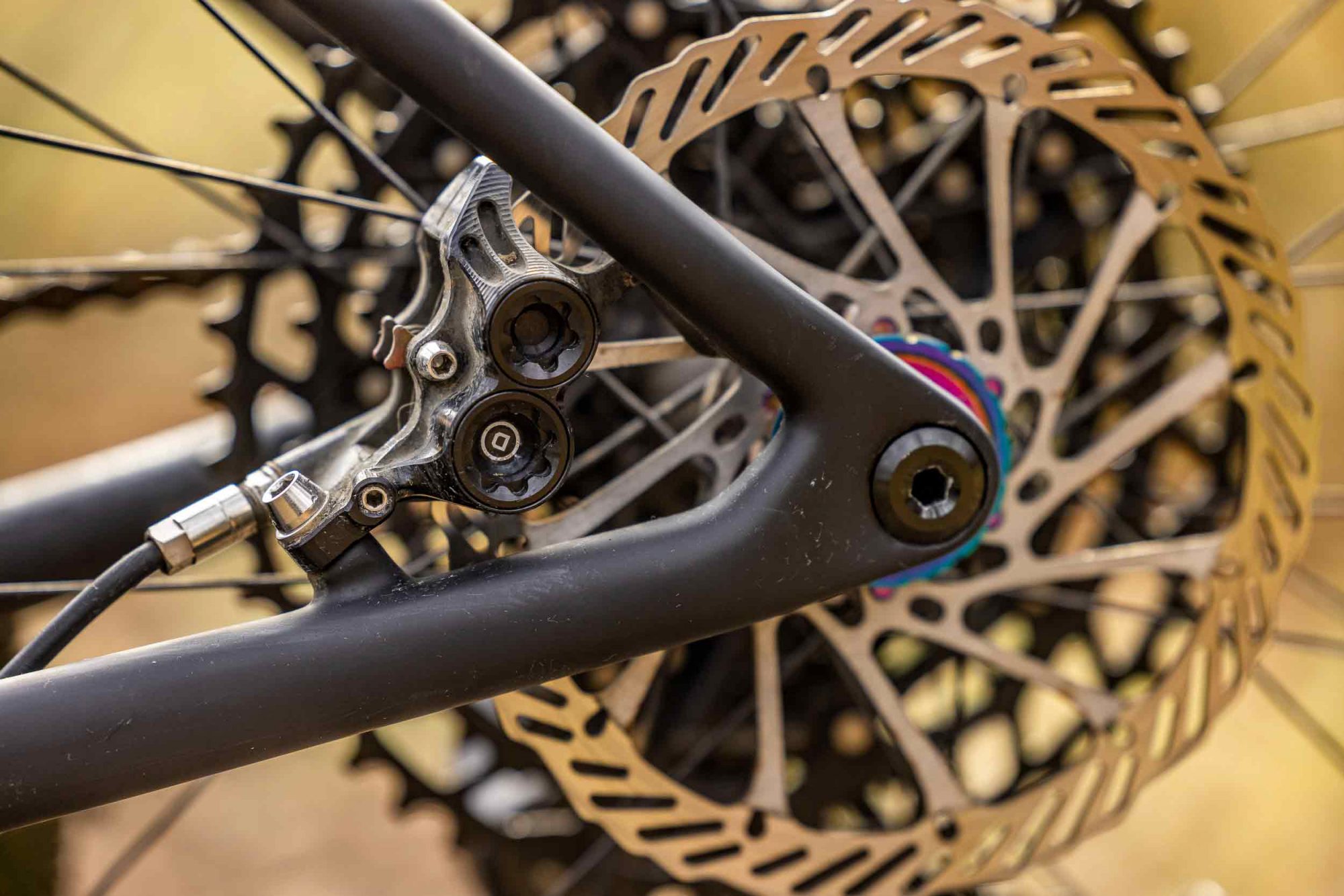
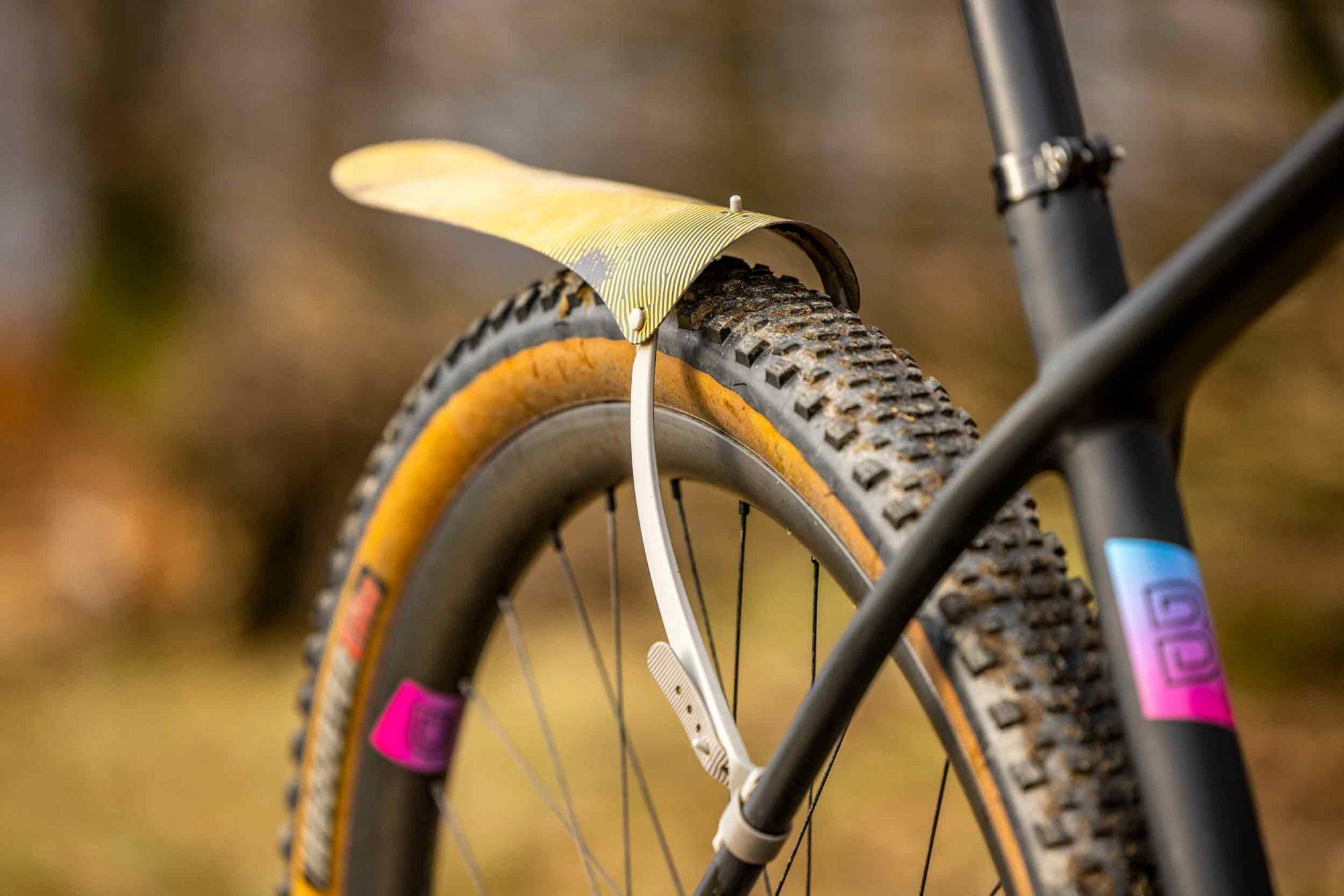
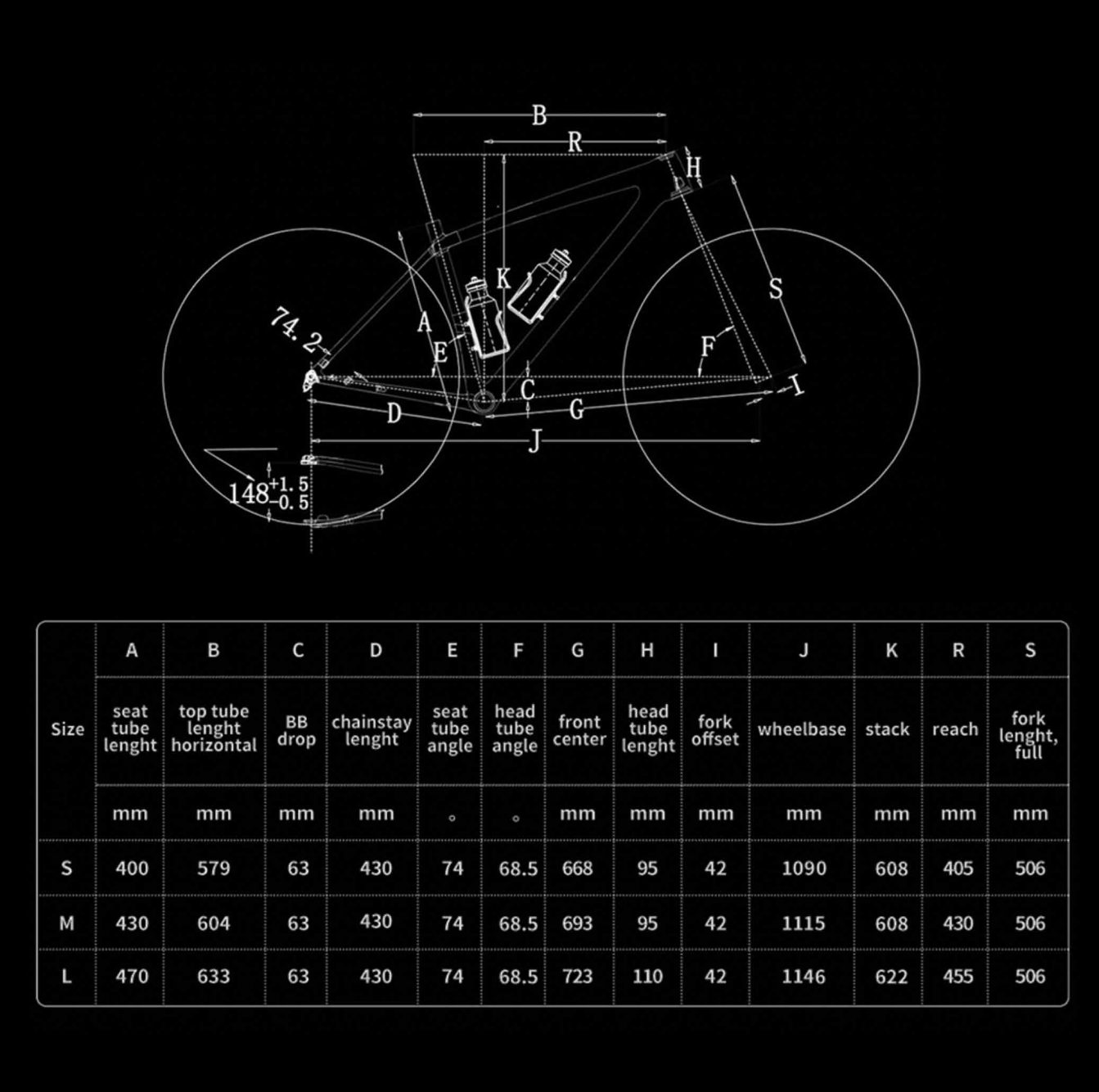
Back to the frame facts. The Basic Monster stands on 29-inch wheels and is equipped with the Boost standard. This means that it utilises an axle width of 110 mm at the front and 148 mm at the rear. Together with the “voluminous” fork, this results in a rather beefy, monster-like look. Plus some “amenities” from the MTB sector. This includes an impressive tyre clearance of 2.4 inches and the option of mounting a 30.9 dropper post. At 1,760 grams for the frameset, the weight nevertheless remains on the carpet. The use of a BSA bottom bracket instead of special press-fit bearing shells is also very down-to-earth. This is cool because it gives you the opportunity to build up the bike with inexpensive standard cranksets that are available on every corner. The soft shapes and integrated cable routing ensure a pleasing look for the matt black monster with its brightly coloured basic stickers.
In terms of geometry, sporty cross-country bikes and more endurance-orientated gravel bikes are not that far apart. The most striking difference lies in the fork installation length, which is somehow logical: the frame is designed for the use of 100 mm suspension forks after all. This is accompanied by a slightly slacker steering angle than is common on classic gravel bikes. This is 68.5 degrees. Apart from that, many of the geometry data could also appear in the table of a “normal” gravel bike. I’m very curious to see how noticeable the differences are on the road!
The Basic Monster test – first impressions
On Boxing Day, the time has come: in the pouring rain, I set off on my third #festive500 ride and embark on my personal monster maiden voyage. Good for the bike: I can safely blame the weather for any discomfort today. But fortunately it doesn’t come to that. The Monster is much more “inconspicuous” than its name and visual appearance would suggest. In a “blind tasting” I probably wouldn’t have realised that I wasn’t sitting on a normal gravel bike, at least based on the riding position.
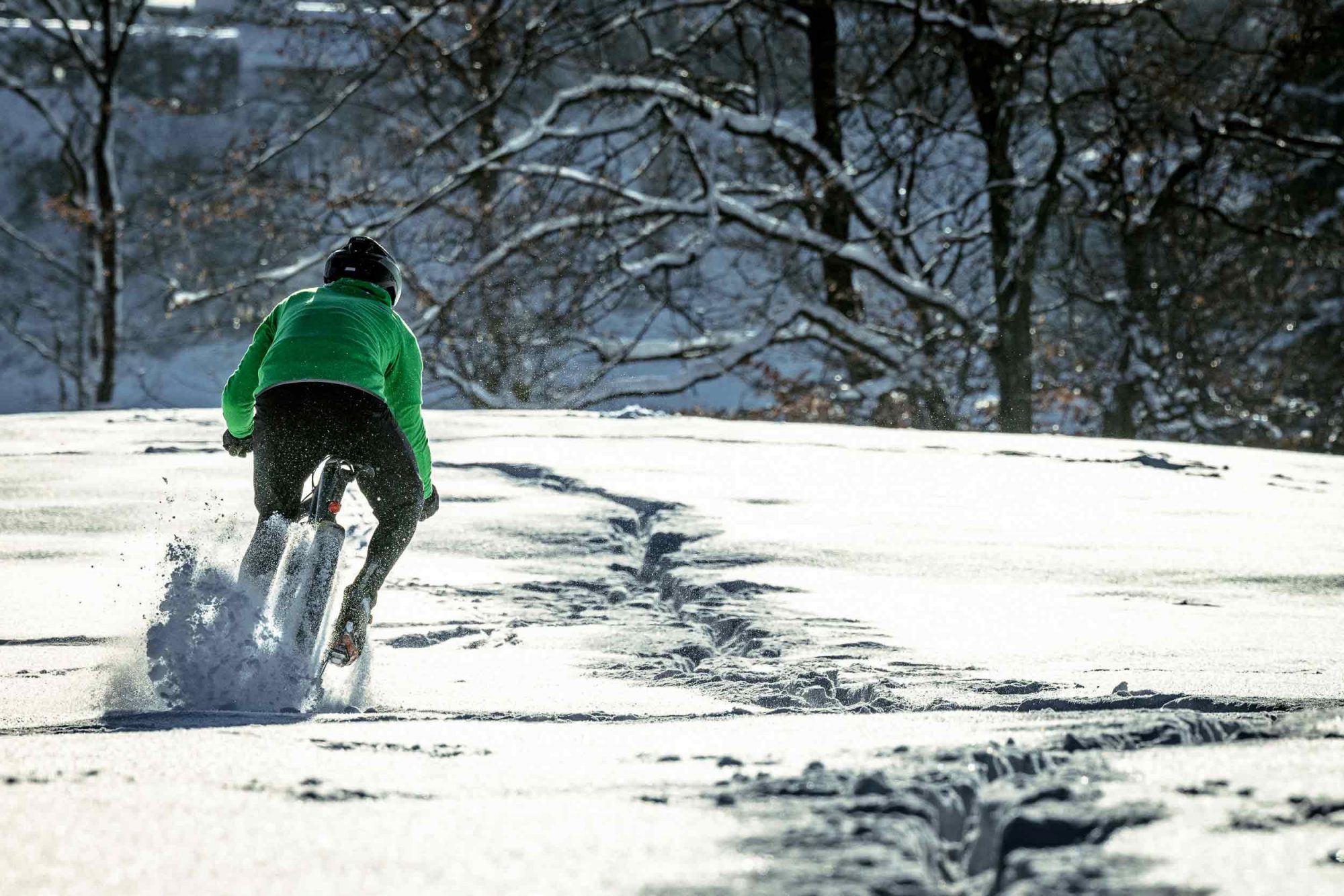
The most noticeable difference on the first ride comes right from the bottom: The wide tyres are of course noticeable – and audible! They hum monotonously on the tarmac, but still roll well. After all, the Kenda “Booster” is a cross-country racing tyre that is light and should roll particularly well. That certainly seems to be the case. All in all, I remember my first ride on the Monster as pleasantly unobtrusive. The bike does what it’s supposed to do and the beefy look – at least for me – doesn’t have any disadvantages to begin with. But it’s obviously an eye-catcher: I register intense glances from more “classic” looking cyclists in particular, who follow me curiously.
A monster on tarmac – does that make sense?
The really nasty weather this winter forced me to ride a lot on tarmac. The forest and farm tracks were so soft that it was impossible to make any progress for a long time. Isn’t that annoying when you want to test a bike like the Basic Monster? Naturally, I was curious to see how this bike would ride off-road. On the other hand, I was surprised at how well it also performs on tarmac. I sit very comfortably on it. A little higher at the front and therefore a little more upright overall than on a “normal” gravel bike. I find this rather pleasant, as I’m already “suffering” enough to reach my #festive500 goal.
In terms of comfort on longer rides, this is a good feature of the bike. The fact that the tyres are so wide hardly bothers me. On the contrary: with the roads almost flooded in places, I also found this rather pleasant. In wet, slippery conditions, such tyres simply provide more safety. In drier conditions, however, it must be clearly stated that if you are mainly riding on asphalt, you don’t need such tyres. But the remarkable realisation remains: The tyres don’t really bother me either.
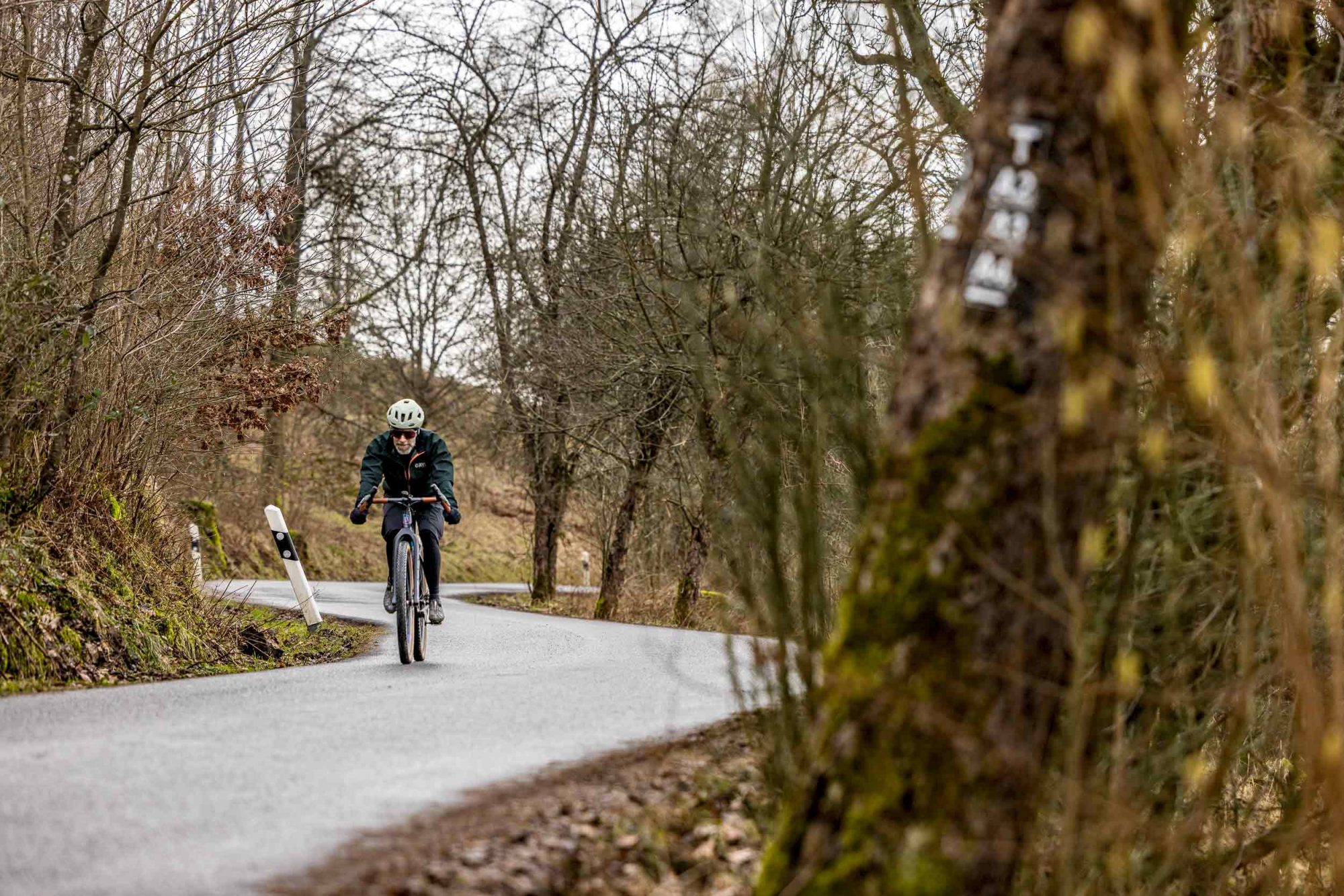
Monster as a bikepacking vehicle?
The features mentioned above – good comfort on long rides and comfortable, grippy tyres – would actually predestine the Monster as the perfect bikepacking bike. However, I have to make a few reservations here: Firstly, the frame is very compact, so there is little space for a frame bag plus water bottle. Secondly, the frame has hardly any threaded eyelets. So you can’t screw on any attachments – not even mudguards. After all, the fork has threaded eyelets, so you could mount cages here. A good setup for bikepacking with the Monster could look like this: Ass bomb in the back, cages in the front and a small frame bag in the centre. I think the Ass-Savers “Win Wing” is a great alternative to a full-blown mudguard. To summarise briefly: The Basic Monster is not really suitable as a fat adventure gravel touring bike. If you want to use it for bikepacking, it practically “forces” you into minimalism – which can also be an advantage. Because you know: travelling light is better!
Finally: The Basic Monster Test Bike off-road!
I had been waiting a long time for this: dry weather and the chance to finally get off-road with the Basic. When the #festive500 Challenge was long over, the paths had dried out and the sun had tentatively emerged from behind the clouds, I planned a beautiful MTB route through the Sauerland. Finally, hardly any tarmac, but lots of forest paths and trails. Let’s see if the monster here lives up to its promise!
I can make it relatively short: Yes, the Monster lives up to its name! The slack steering angle and the voluminous tyres are, in my opinion, the “main culprits” for the very good off-road characteristics. Both together simply provide a decisive plus in safety. Where I tend to ” slide down” with a narrow-tyred gravel bike, I can really let the Monster run! It almost feels like being on a “real MTB”. In any case, I feel a bit like John Tomac in the 90s. At least that’s how I imagine he felt at the time.

It’s a cool mix of safety and a rather aggressive posture, which is made possible primarily by the drop bar. Of course, I wasn’t travelling on man-made downhill slopes. However, I didn’t come across anything on the publicly accessible paths and trails that I couldn’t have ridden on the Monster with a good feeling. I’m sure this is also due to my mountain bike bias. But I can say that the characteristics of the Basic Monster are also great on difficult surfaces and technical trails. Whether it all has to be or makes sense in theory is now completely irrelevant to me. Because one thing is absolutely true: I really enjoy the Basic Monster!
Basic Monster gravel bike test: Are there any negative aspects?
Where there is light, there are logically also shadows. During my Basic Monster test, however, it was more of a very little shadow. Basically, I like the discreet, matt black look. However, I found them a little difficult to clean. There were always streaks or fluff from the flap visible. I don’t know whether the frame finish will remain so attractive in the long term. There are special sprays for matt frames – maybe something like that will help. I’m also sceptical as to whether the fine Basic logo on the down tube will last long. After all, it’s easy to replace if it’s no longer pretty. A rather minor fly in the ointment and of a purely visual nature, but I’ll mention it anyway.
The limited mounting options on the frame mentioned above are only a disadvantage if you want to attach a lot of things to your bike. It doesn’t really bother me, as I don’t expect to be travelling the world by bike and don’t want to use the Monster as a commuting bike. On the other hand, a few more eyelets wouldn’t really interfere and would significantly expand the assembly options. And that’s it: apart from that, the monster surprised me positively throughout!
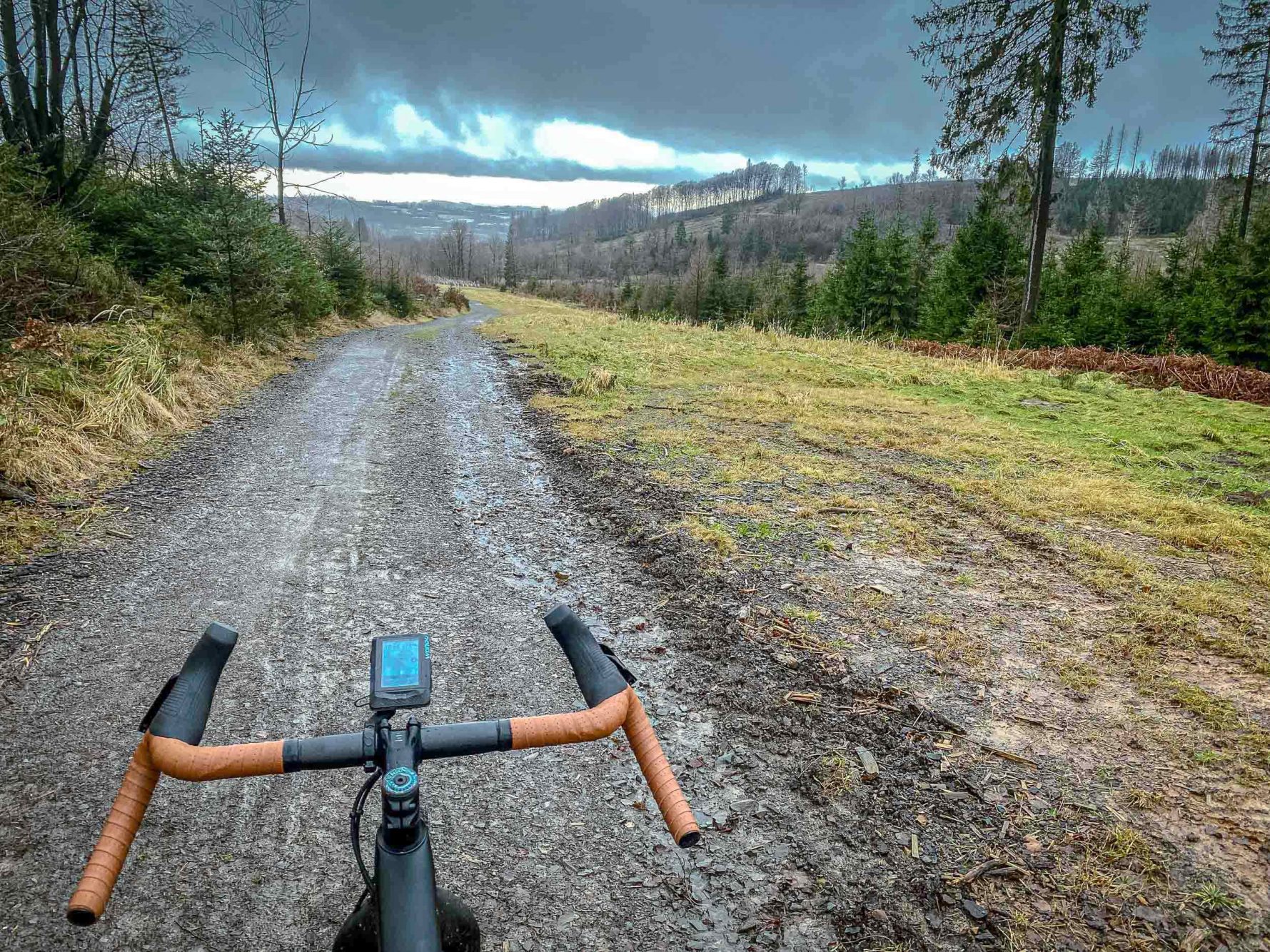
Basic Monster test – my review
I was very sceptical at first. But this test surprised me! And he convinced me: a gravel bike with strong mountain bike influences makes perfect sense! If you prefer to ride off-road and enjoy riding challenging trails, the Monster offers you a high level of comfort and riding safety. On the other hand, you are still fast on smooth gravel paths and tarmac. Basically, the Monster does everything that characterises a gravel bike: It combines the best of two worlds, the best of a road bike and the best of an MTB. However, the focus of the Monster is clearly on the advantages that an MTB has to offer.
So for whom is the Basic Monster the perfect bike? I would say it’s for anyone looking for a particularly robust, comfortable and all-terrain gravel bike, but who doesn’t attach any particular importance to maximum efficiency on tarmac. Or for people like me: I don’t fancy a sporty race-cross-country mountain bike at all. I could easily keep up with the Monster in the village MTB group, but would still be riding a gravel bike. The bottom line is that the boundaries are blurred here and in the end it is simply a matter of taste. Whether this gravel bike concept is something for you is entirely up to you! Based on my experience, I can encourage you to think outside the box if, like me, you are initially sceptical when you see the Basic Monster.